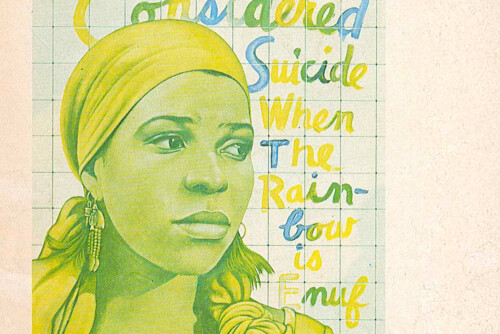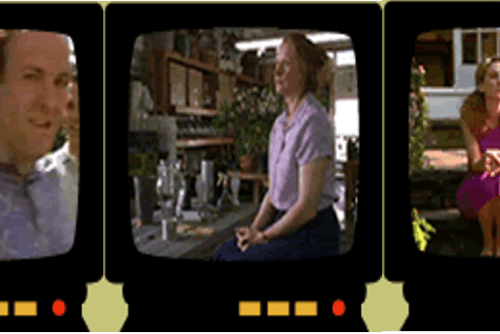What would a political movement that had movement per se as its focus look like? Would it be recognizable as political, as ethical? In the “Theoretical Introduction” to The Accursed Share, a work that seeks to shift our perspective from restrictive to general economy, thereby accomplishing a Copernican revolution in ethics,1 French social theorist Georges Bataille spends a good deal of time thinking about movement.
At first sight, it is easy to recognize in the economy—in the production and use of wealth—a particular aspect of terrestrial activity regarded as a cosmic phenomenon. A movement is produced on the surface of the globe from the circulation of energy at this point in the universe. The economic activity of [human beings] appropriates this movement, making use of the resulting possibilities for certain ends. But this movement has a pattern and laws with which, as a rule, those who use [it] and depend on [it] are unacquainted.2
Because we think about ourselves as individuals, as members of specific communities, as part of a particular species—because we think from the perspective of restrictive economy—we think about the circulation of energy as a resource for supporting life, which causes us to think about amounts available and potential shortages, rather than thinking about the circulation of energy as the movement of life itself, which compels us to think about abundance. In other words, we do not think about the economy—the production and use of wealth—in general.3
On the surface of the globe, for living matter in general, energy is always in excess. . . . The choice is limited to how wealth is to be squandered. . . . The general movement of exudation . . . of living matter impels [human beings], and [they] cannot stop it. . . . The global movement of energy . . . cannot accumulate limitlessly in . . . productive forces; eventually, like a river into the sea, it is bound to escape.4
In the first volume of The Accursed Share, Bataille presents Aztec sacrifice, mob violence, the growth of pond scum, the first and second world wars, weeds breaking through pavement, the threat of nuclear annihilation, and the Marshall Plan as illustrations of this fundamental principle. Energy moves on the surface of the globe and must eventually be expended. Solar energy may indeed melt polar ice caps, causing ocean levels to rise, thereby moving current coastlines, but anxiety over destruction of the buildings in which we work, the homes in which we live, or of the people occupying either, betrays the character of our perspective, rather than identifying what counts as life and its cessation. Life will fulminate, even if our lives terminate. Our desire to use and conserve energy to serve our ends and sustain our lives “only has this incontestable effect: It causes us to undergo what we could bring about in our way, if we understood” more fully the patterns and laws of general economy.5
To think from the perspective of restrictive economy is, of course, completely rational, utterly sensible, absolutely necessary, and perfectly understandable. To think from the perspective of restrictive economy is to think in terms of goals, projects, programs and measurable outcomes. It is also to think in terms of limitation and scarcity. It is to think about danger and threat; it is to worry about preserving one’s community and protecting one’s self. It is to conceive of life as something that must be sustained rather than something that moves incessantly and inevitably beyond and around all of our efforts to contain, channel, use and instrumentalize it. It is a failure to grapple with the ways in which the life that animates our lives can often be experienced as frightening, as overwhelming, as disturbing, as terrifying. This, it seems to me, gives shape to the central question for any political or ethical system: does it conceive of life as a life, as figure and form, or does it understand life as life, as flow and fulmination?
Thinking about life as life reveals why the fight for marriage equality—along with any other goal grounded in recognition—is such a political and ethical dead end. For this fight assumes that marriage is a form of life worth fighting for because it provides access to resources: material, psychic, political, affective, spiritual. It secures these resources, on a limited basis, for some people, so they can pursue their ends, so that they can have a life. This fight conjures a figure of the good life, it assumes—demands even—that life can and should be captured and contained in a life. By the same token, and for exactly the same reasons, any critique of the marriage equality movement that posits another figure—kinky polyamory or cum-swapping parties, for example—is also a political and ethical dead end. For such a response merely substitutes another form of life as the one that merits support and sustenance; it does nothing to challenge the circumscription of life into a life.
While we can certainly distinguish different forms of life according to how much movement they allow, how much rigidity they seek to impose, how narrowly they constrain energy’s ebullition, we must acknowledge that both practices that seek to curtail life—colonial domination, sexual violation, genocidal terror—and practices that oppose such curtailments are energized by the same desire for mastery and control. This does not mean that lethal violence and efforts to resist it are necessarily morally equivalent, but it also does not mean that acts of bullying and campaigns to combat it do not derive their energy from similar sources, do not give rise to similar pleasures, do not provide access to similar satisfactions. If this is true, then how do we sort respective graspings after mastery? How do we interrupt the will to innocence that funds our own norms and ideal? Our political and ethical work cannot be typified (only) by trying to distribute resources and shape institutions so that a broader range of people have a greater degree of autonomy over their lives; it must also include efforts to expose the deeply entrenched tragedy of our desire for control and to develop habits that interrupt, dislodge and circumvent it.
Due in large part to his specific rhetorical choices, the value and insight of Lee Edelman’s magisterial No Future6 has been, in the main, occluded by obsessive focus on–and frequent misreading of—his statements about the Child and the future. Such attention privileges—through fawning praise or vitriolic denunciation—Edelman’s most outrageous quips. Most work published to date on Edelman has failed to engage carefully his larger, structural argument about the fundamental antagonism at the heart of the self and the social. Throughout No Future—and, much more clearly in work published subsequently—Edelman insists that the self and the social necessarily require a constitutive outside, which he calls the queer, precisely because they are imagined in terms of calcified, static, bounded figures of life. While the content of the remainder changes, when new figures come on the scene as plausible and legitimate options for a good life, the charge of being detritus always attaches to some bodies, some group of people, some feature of subjectivity. Edelman returns constantly to the importance of figure, to the exclusionary violence that informs the figuration of what and who counts as a life worth living. If Edelman is correct, then attempts to overcome this exclusionary dynamic, while absolutely vital, are also always a losing game because they perpetually displace the force of the violence they hope to permanently vanquish. Edelman importantly notes that through the violent denigration of the other the social order accesses the pleasures of violent excess it seeks to contain. Rather than seeking to lay claim to a life that will be recognized as possessing moral worth, Edelman contends that those who bear the mark of dangerous, disruptive outsider (the queer, the sinthomosexual) should take it upon themselves to instantiate that danger, bear the brunt of the violence, and reveal the operation of the machine, thereby dispelling the fantasy of incorporating the remnant in an eschatological restoration of wholeness, harmony, and inclusive peace. Although he writes that the queer who figures the death drive should cease contesting that figuration, we can restate Edelman’s point in the terms I have set out here by suggesting that the queer be willing to be overcome by the chaotic swirl of life rather than succumbing to the temptation to live a life, with its necessary constraint and circumscription.
Bataille offers a remarkably similar diagnosis of the problem of social violence, of social order. He agrees that violence is central to the functioning and organization of society—while a source of anxiety and fear, it is also alluring and seductive. Bataille counsels social practices that will reveal and expose the pulse of violence, thus interrupting its operation by redirecting its destructive force. These revelatory practices, for Bataille, will be experienced as a dissolution of the self and the self’s attachment to the self. This attachment, which Edelman describes through the figures of the future and the Child, Bataille describes in terms of work and project. While rejecting belief in God, Bataille is incredibly interested in the practices of mysticism and the ways they give access to new experiences of being a self in relation to others and the world. He holds out similar hopes for erotic and aesthetic experience. Edelman—along with Leo Bersani, Tim Dean, and Teresa de Lauretis—is also deeply interested in the connections between the erotic and the aesthetic and the ways these connections can be exploited for the transformation of our experience of being a subject in relation to the world.For both Edelman and Bataille, the dynamics of exclusion, objectification, and instrumentalization are inescapable. Bataille states explicitly that to be human is to be caught in the paradox of needing to work, needing to be engaged in project, but also desperately desiring to escape project and work because they do not ultimately answer the fullness of human desire for intimacy and being. The very things that make us human are precisely the things that make us alienated, violated, violence-dealing. In fact, the most defining human experience is to be aware of the loss that defines human experience. The revelation/interruption/exposure of this process then is just that, only that—it is not a redemptive transformation, not a solution, not an overcoming. But the fantasy of overcoming, the longing for redemption, the desire for a final solution is the situation in which we find ourselves. By attending to this line of analysis, we may need to abandon the fantasy of overcoming dehumanizing violence, but we might be able to maintain a dismal hope of using it for different ends. By understanding the operation and character of the foundational violence of human being and belonging—and all its wily ways—we have a chance to do something different with its propulsive force.




